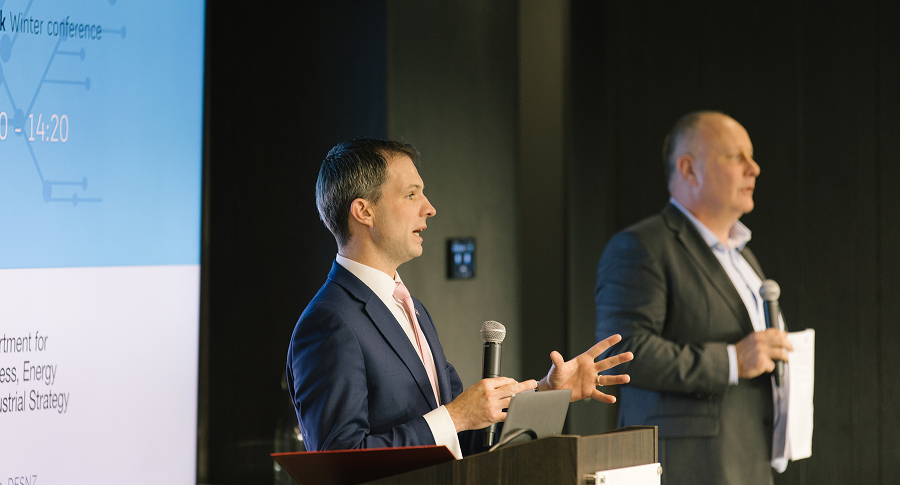Regen has published a new report in partnership with the MCS Charitable Foundation that sets out the scale of the challenge - and the solutions - to prepare Britain's electricity network for net zero.

Regen has published a new report in partnership with the MCS Charitable Foundation that sets out the scale of the challenge - and the solutions - to prepare Britain's electricity network for net zero.

One thing that all low carbon energy projects have in common is the need for a connection to the grid. Connecting to the grid is now perhaps the biggest challenge for developers of solar farms, battery storage and electric vehicle charging facilities – as well as for our net zero ambitions more generally.
Achieving net zero means our electricity network must be able to connect gigawatts of new renewable generation and power millions of electric vehicles and heat pumps across the country. In recent months there has been intense focus on the grid, as policymakers have recognised that our energy networks are critical infrastructure for the UK’s energy goals. Most acutely, lead times to connect critical new low carbon generation projects are now over 15 years.
A net zero ready grid is achievable. We have already connected many gigawatts of wind farms, solar farms and batteries. The key grid players have all set out plans and initiatives to work smarter and increase capacity. The priority now is moving from action plans to delivering reform and investment at pace.
Significant investment is needed. This will enable the grid to move away from expensive fossil generation onto low-marginal cost renewables and enable electrification of heat and transport. In the long term, network costs per unit of energy delivered could fall.
This report sets out:
After launching this report, Regen brought together leading players in connections reform to an event in Bristol. The aim of the event was to enable industry to discuss with DESNZ, Ofgem, ESO and ENA their plans to address the increasingly acute grid connection challenge and how our sector can shape changes at this critical stage. Here is a summary of the key takeaways.
It’s clear that grid connections have risen up the agenda in Westminster and Whitehall, with even the Prime Minister talking about the importance of a ‘first ready, first connected’ approach to connections. DESNZ and Ofgem confirmed they will be publishing a Connections Action Plan ‘shortly’, providing government and regulator support to deliver the proposals being developed by ESO and ENA to address the connections queue.
DESNZ and Ofgem also emphasised that, alongside addressing the queue, there is work to be done to build the network faster. One point raised was the importance of ensuring we have the skills and capacity to build. The recommendations in the recent Winser review provide a step towards addressing those challenges.
Queue management was, predictably, a hot topic. Both DESNZ and Ofgem were clear on the importance of taking a holistic approach. We are now expecting a decision from Ofgem on CMP376, which will introduce a right for the ESO to terminate projects not progressing against agreed milestones. Given the political focus on this issue, it seems increasingly likely that Ofgem will support ESO’s proposal that queue management milestones are applied to the whole queue, not just new projects.
ESO and ENA updated on progress against their Five- and Three-Point Plans to address the connections queue. These measures are now moving into implementation, with new offers expected to come through from November.
A key piece of feedback from the audience was that communication and coordination need to be improved. There is currently a ‘postcode lottery’ in how new measures are being applied, with lack of coordination between transmission and distribution and between different network operators. Getting the comms right is crucial so that everyone has the opportunity to participate in new initiatives and to ensure the process is fair.
The ESO’s ‘GB Connections Reform’ is developing an entirely new process for managing new connections, based on milestones and gates. Key issues in this process include:
The sense from the room was that this reform is broadly welcomed, depending on the detail. However, delegates were clear that a new process will have little impact if the current queue is not addressed.
ESO will be publishing their final recommendations in November. Regen is shaping proposals via our position on the reform Steering Group.
We heard from ESO that the contracted pipeline includes 50 GW of stand-alone and 100 GW of hybrid/co-located battery capacity. ENA confirmed there was 60 GW of contracted sites at distribution scale. This takes the total contracted pipeline to over 200 GW (including co-located capacity) and approximately 100 GW of stand-alone.
Ofgem wrote a letter in August in support of tactical solutions put forward by ENA to help with storage connections at distribution. Guidance for network operators has now been published. These changes will impact new connections from 31 September and the new approach will move network operators from the current worst case assumptions being used to assess the impact of battery storage on the network. It is yet to be confirmed whether this will be used for existing sites, and whether there will be an option for updated connection offers.
With so much change underway and significant implications for developers and investors, it’s clearly important for our industry to engage. Regen runs a quarterly Grid Connections Working Group for members, where we discuss the various connections reforms and coordinate action. We invite you to join us.
Sign up to receive our monthly newsletter containing industry insights, our latest research and upcoming events.